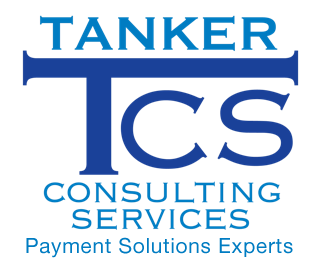What is EMV and is it the same as “chip & pin”?
EMV stands for Europay, MasterCard and Visa. It is the global standard for chip-based Debt and Credit Card transactions. It is a joint effort between Europay, MasterCard and Visa to ensure security and global acceptance so that MasterCard and Visa Cards can continue to be.used everywhere. EMV cards contain embedded microprocessors (chips) that provide strong transaction security features and other application capabilities not possible with are magnetic stripe cards we use today. The standard has many nicknames worldwide like “Chip and Pin” or “Chip and Signature”
Who is in charge of EMV and Who currently uses it?
Today, EMVCo manages and maintains the standard. EMVCo is owned by American Express. Discover, ICE, MasterCard, UnionPay, and Visa, and includes other organizations from the payments industry. Over 80 countries are currently using EMV cards. The United States is the last major country to migrate to EMV.
What’s so secure about EMI!?
The chip in an EMV card helps secure transactions in three ways:
Card Authentication
Using the chip in the card, the card is authenticated during each payment transaction which protects against face-to-face use of counterfeit cards. Unique transaction data is created for every chip transaction. Each if the data is
intercepted, it cannot be used for a face-to-face fraudulent transaction
Cardholder verification
Cardholder verification ensures that the person attempting to make the transaction is the person to whom the card belongs. EMV chips can support two different cardholder verification methods (“CVM”) PIN or signature. The CVM is determined by the issuing bank. in some cases, the issuing bank may even decide to not use CVM at all – for example with unattended devices where transaction amounts are typically quite low.
Transaction authorization
A transaction can be authorized either online or offline. Online EMV authorizations process the same way online mag-stripe transactions are processed. The transaction information is sent to the issuer and the issuer either approves or declines the transaction. An offline EMV authorization is handled between the card and terminal using issuer-defined parameters pre-programmed on the card.
What difference will it make if a merchant can’t accept an EMV transaction?
The card associations have mandated liability shift starting in October 2015. In laymen’s terms, this means that whoever has the most secure technology wins in a counterfeit care dispute. If the merchant was using an HMV terminal but the issuer has not provided the cardholder with an EMV card, the issuer would be responsible in the dispute. If the cardholder was issued an EMV card, but the merchant was not using an EMV terminal, the merchant is liable.
What’s the difference between EMV-ready and EMV-capable?
There is no difference. Tanker Consulting Services is successfully deploying EMV-capable equipment today. Once the card brands have finished certifying EMV applications, merchants who are using EMV-capable equipment will be able to accept EMV cards with just a short download.
What’s the difference between contact EMV and contactless EMV and which is better?
Contact EMV cards must remain inserted into the dip reader throughout the entire transaction. Contactless EMV cards are tapped near the reader on the terminal, and they do not need to remain near the terminal throughout the entire transaction. Contactless EMV cards are beneficial for high traffic merchants and are designed to speed up the transaction process.
Will cardholders still need to sign receipts?
It’s up to the issuers to decide which cardholder verification method (CVM) must be used: PIN, signature, or nothing. The chip will direct the terminal to prompt for the correct method.
What about merchants using Micros, Aloha, or other POS solutions?
Merchants utilizing an integrated point-of-sale system should reach out to the reseller that installed or supports their system to discuss all available EMV-capable solutions for the system in place.
How will ecommerce merchants take EMV cards?
EMV is designed to fight face-to-face fraud and does not apply to the e-commerce or mail-order industries.
Will merchants need special or new equipment?
Yes, all merchants will need to ensure their current equipment is EMV capable, or they will need to purchase new equipment that is EMV capable.
Does Tanker Consulting Services have EMV capable equipment available?
Yes, I have Chip READY, APPLE PAY READY, EMV COMPLIANT capable equipment that can be deployed today. The cost is only $350-$4-00 per terminal plus a $50 reprogramming fee.
Where can I find more information about EMV?
Call or write me! Scott Tanker @ 609-992-0201 or [email protected]
